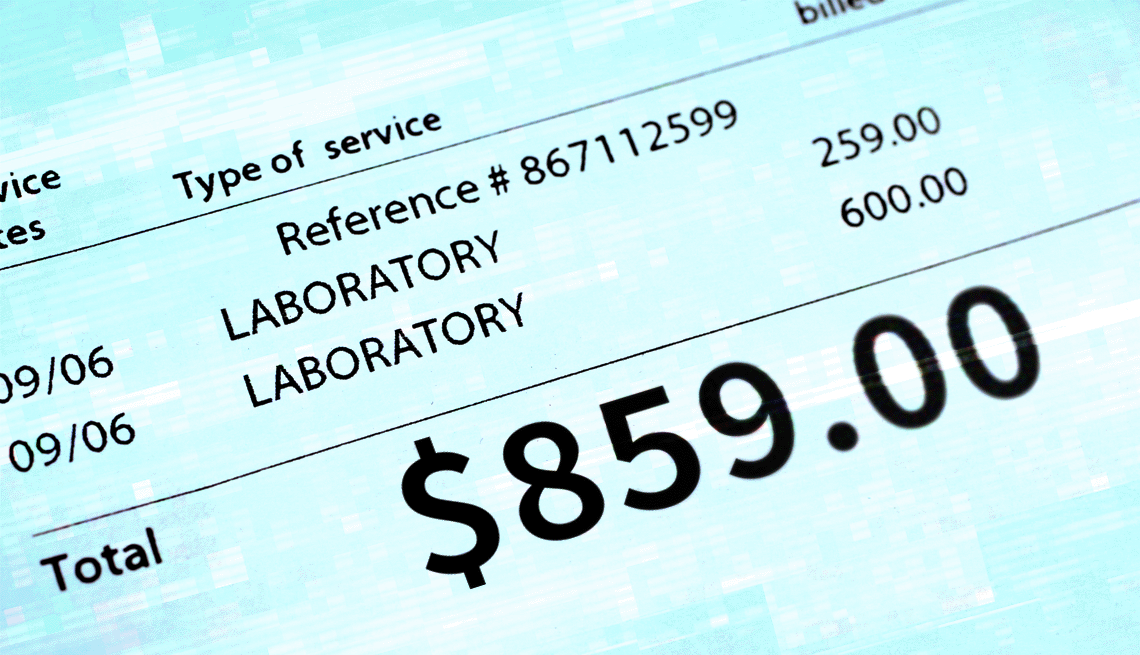AARP Hearing Center


In 30 years of analyzing medical bills for errors, Pat Palmer has seen some jaw-dropping mistakes: Medications and devices marked up 100 percent to 300 percent; a Illinois hospital that charged a man $186,000 for 200 heart valves; a bill sent to new parents for a circumcision — of their baby girl.
Palmer, a patient advocate and author of The Medical Bill Survivor Guide, estimates that she finds an error on about 9 out of every 10 hospital bills she examines and about 7 of every 10 physician bills.
“Whether they are intentional or unintentional, that’s money out of everybody’s pocket,” says Palmer, co-founder of MedCost Solutions, a health benefits solutions company.
According to a survey published in JAMA Health Forum in August 2024, about 1 in 5 people said they received a medical bill over the past year that they disagreed with or couldn’t afford.
Older adults are especially vulnerable to billing errors. With more chronic conditions and more frequent and complex medical care, they face a greater chance of incorrect charges, according to the Consumer Financial Protection Bureau (CFPB).
Even though nearly all adults age 65-plus are on Medicare — and about half have supplemental insurance — they still faced a staggering $54 billion in unpaid medical bills in 2020. A troubling number of those bills were the result of errors, the CFPB said, charging retirees for services they never received.
A 2024 federal audit of Medicare Advantage health plans uncovered similar problems, revealing billions of dollars in overcharges and other payment errors.
Spotting a medical bill error can save you hundreds, or even thousands of dollars, Palmer says. And you don’t have to be an expert to catch medical billing mistakes.
Here are eight ways to check your medical bills for errors and get them fixed.
1. Request an itemized bill and review it carefully
Many medical providers, especially hospitals, don’t include an itemized list of charges when they bill you. Instead, they lump all the charges together in what's called a “summary” bill, with a “total due” at the bottom.
If your bill does not include a detailed list of charges, call the doctor or hospital’s billing office and ask for an itemized invoice to make sure you’re being charged only for the services you received, Palmer says.
You may receive additional statements from physicians, surgeons or specialists — such as anesthesiologists, radiologists and pathologists — who are not employees of the hospital or facility where you were treated. Request itemized bills from those providers, as well.
2. Wait before you pay
Some providers send bills before your insurance company has had time to process the claim, which can make it seem like you owe more than you actually do, says Caitlin Donovan, a spokesperson for the Patient Advocate Foundation, a nonprofit that helps patients resolve billing problems.
When you receive a bill, check the “insurance payment” or “plan payment” line. If it’s blank, your insurer likely hasn’t processed the claim yet.


































































More From AARP
25 Great Ways to Manage Your Medications
This guide has practical strategies to improve health outcomes and peace of mind
Show Me the Money: How to Find Unclaimed Assets
From forgotten 401(k)s and bank accounts to safe deposit boxes, you could be entitled to a lot of cash
Taking Multiple Meds? Why You May Want to Cut Back
A stuffed pill box could be harmful instead of helpful